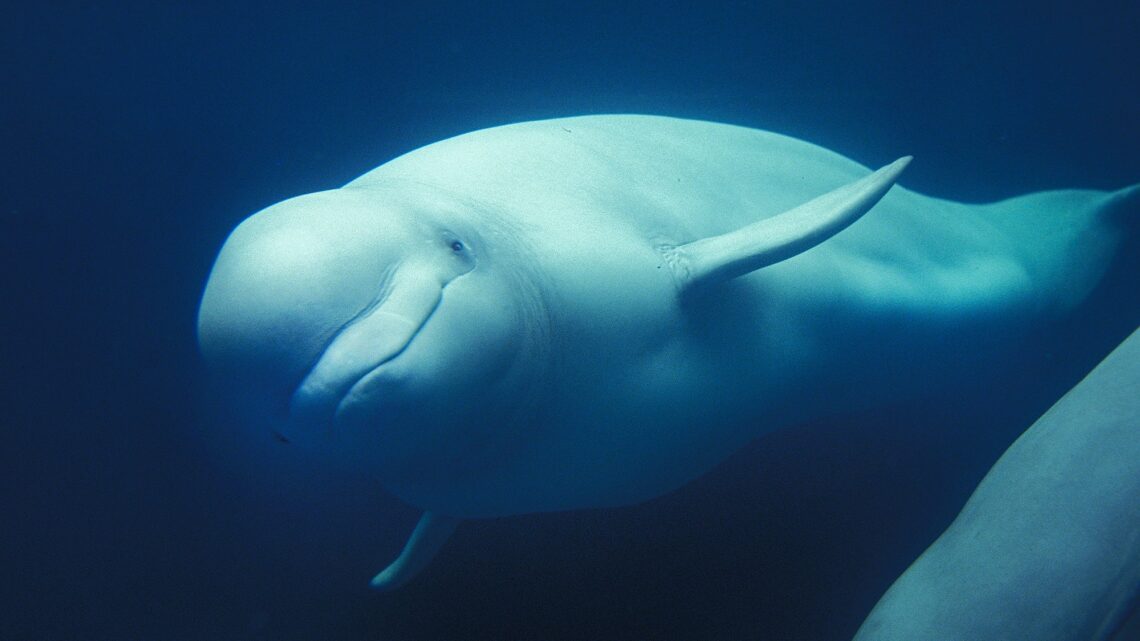Animals have evolved all sorts of weird and wonderful methods of communication—everything from mantis shrimp bouncing pulses of polarized light to one another to birds-of-paradise gallivanting around the jungle to demonstrate their virility. Even so, there may well only be one animal that can claim to have a highly developed variety of expression that’s communicated entirely via a blob of fat on its forehead. Step forward—or, perhaps, swim forward—the beluga.
Like all other toothed whales, these little Arctic-dwelling cetaceans have an organ on their foreheads that’s referred to as the melon. The melon has long been a source of fascination to scientists, who’ve proposed a variety of outlandish theories over the years to explain its presence. (The consensus today is that it’s used for sound generation and to assist in echolocation.)
In the beluga, however, the melon also seems to have another use. Belugas’ melons are strikingly large and, uniquely, they are also malleable, because belugas have facial muscles that can pull and push on the melon. Doing this essentially allows the animal to change the shape of its head. But why do belugas do this?
As ScienceNews reports, a March Animal Cognition study of four captive belugas in a Connecticut aquarium set out to categorize the different shapes the melon can take, and then trying to deduce those shapes’ meanings. The study’s authors analyzed a year’s worth of video footage of the belugas, and then compared their findings to observations of another, larger population of 51 belugas at an aquarium in Canada.
They found that while the melon can take any number of subtly different shapes, these all fall into five distinct categories—and they suggest that these shapes essentially constitute a form of visual communication unique to belugas.
Read the full article here







